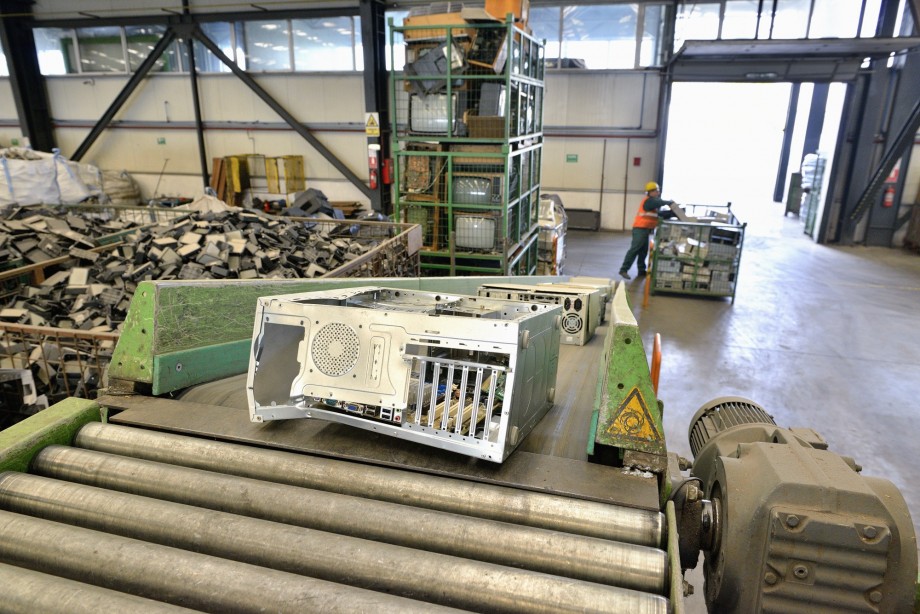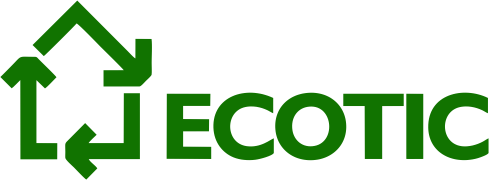Out of the desire to keep a fluency of the episodes in the series How to recycle electrical and electronic equipment, we decided to present today the complementary device to the monitor, more precisely united central father. Why? We are in the era of dynamics in which we use mobile gadgets, and the use of configurations that include a central unit and various input and output peripheral devices is increasingly rare. The entire system of a central unit has been replaced by small components that we find today in various gadgets, from laptops to high-performance tablets that are increasingly used. The question that arises once all these are known, is: What happens to the central unit once it has worn out? We are European citizens and we know the legal obligation to selectively collect waste, and therefore we will hand over the central unit to a specially designated collection point (here find all collection points in the ECOTIC system).
central father. Why? We are in the era of dynamics in which we use mobile gadgets, and the use of configurations that include a central unit and various input and output peripheral devices is increasingly rare. The entire system of a central unit has been replaced by small components that we find today in various gadgets, from laptops to high-performance tablets that are increasingly used. The question that arises once all these are known, is: What happens to the central unit once it has worn out? We are European citizens and we know the legal obligation to selectively collect waste, and therefore we will hand over the central unit to a specially designated collection point (here find all collection points in the ECOTIC system).
Why we recycle central units?The central units of personal computers are part of the category of electronic equipment waste which is mainly characterized by high content of elements si chemical compounds with high economic value. In parallel with this not negligible feature, the recovery of the chemical elements and compounds from the components of the central units implies complex technological processes, with polluting potential.
Recycling processes of waste electrical and electronic equipment (WEEE) are governed by the following distinct elements:

In the following we list some of chemical elements cu potentially dangerous which can be found in inside a units Central:
|
Chemical element |
Components of the central units in which they may occur |
Harmful effects |
|
Halogenated compounds: |
||
|
Capacitors, transformers |
1) serious impact on health and the environment, which includes carcinogenic effects, diseases of reproductive function, changes in the immune system, loss of biological diversity, generally slow-moving effects. |
|
Plastic flame retardants |
|
|
Printed circuits |
1) effects on the nervous system but also on the skin |
|
Cases |
1) effects on the reproductive system |
|
Electrical insulators |
1) incineration generates the release into the atmosphere of compounds from the category of dioxins and furans - extremely toxic to the human body. |
|
Heavy metals / Other metals: |
||
|
Diode |
|
|
Power supplies |
|
|
FDD |
1) causes allergic reactions |
|
batteries, printed circuit boards |
1) severe effects on plants, animals and microorganisms 2) affects the nervous and peripheral system, the blood and endocrine system 3) effects on brain development, especially in children |
|
batteries, printed circuit boards |
1) affects the human body, especially the kidneys |
|
batteries, printed circuit boards |
1) negative effects on brain development |
In terms of the economic impact of recycling used electronic equipment, it can be considered that these types of waste, due to the complexity of the elements they contain, are some of the the most valuable categories of waste.
In 2013, 641,04 tons of central units were processed in the ECOTIC system, representing 79.590 pieces of such equipment.
Estimated, from 10 tons of central units collected selectively, following the dismantling processes, results the following types and quantities of fractions: 5.959,7 kg iron, 1.860 kg electrical components, 910,9 kg unsorted plastic, 749,2 kg printed circuits ( motherboards), 258,8 kg aluminum, 182,3 kg of cables, 53,5 kg of batteries, 14,2 kg of copper, 11,4 kg of electric capacitors> 25mm.
From the quantity of 749,2 kg of resulting motherboards are extracted 160 kg Copper, 121 gr. Silver, 56,6 gr. Gold, 30 gr. Palladium, 13 kg Zinc, 10,8 gr. Platinum, 4 kg Aluminum (these data were identified starting from the study carried out by GREEN ELECTRONICS in 2011, "Overview of hydrometallurgical process for the recovery of copper from waste printed circuit boards").
The stages that a central unit goes through in the recycling process are:
- REMEDIATION - the elements with dangerous content are extracted:
- Electrolytic capacitors
- bATTERY
- Printed circuit boards
- Plastics with brominated compounds
- External cables
2. TREATMENT - the elements and subassemblies without dangerous content are removed:
- Metallic case
- Cable
- Plastic materials
- etc,



3. VALORIZATION - the extracted components and materials are subjected to final recovery and recycling operations, in order to integrate these elements in the economic circuit.Here you can see what the elements subject to this capitalization process can turn into.
The recovery of materials and components present in electronic equipment, especially those present in IT&C equipment, is a priority at EU level, in order to reduce dependence on imports of raw materials that underlie the production sectors in the field of electronic equipment and beyond.
The pictures were made with the support of GreenWeee International.
